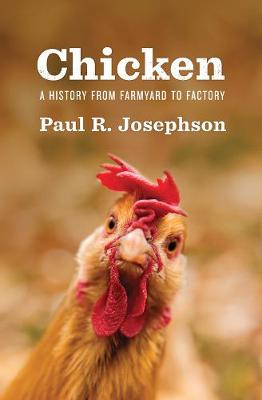Environmental History
1 total work
Why has the chicken become the meat par excellence, the most plentifully eaten and popular animal protein in the world, consumed from Beijing to Barcelona? As renowned historian Paul Josephson shows, the story of the chicken's rise involves a whole host of factors; from art, to nineteenth-century migration patterns to cold-war geopolitics. And whereas sheep needed too much space, or the cow was difficult to transport, these compact, lightweight birds produced relatively little waste, were easy to transport and could happily peck away in any urban back garden.
Josephson tells this story from all sides: the transformation of the chicken from backyard scratcher to hyper-efficient industrial meat-product has been achieved due to the skill of entrepreneurs who first recognized the possibilities of chicken meat and the gene scientists who bred the plumpest and most fertile birds. But it has also been forced through by ruthless capitalists and lobbyists for “big farmer”, at the expense of animal welfare and the environment. With no sign of our lust for chicken abating, we're now reaching a crisis point: billions of birds are slaughtered every year, after having lived lives that are nasty, brutish and short. The waste from these victims is polluting rivers and poisoning animals. We’re now plunging “egg-first” into environmental disaster.
Alongside this story Josephson tells another, of an animal with endearing characteristics who, arguably, can lay claim to being man’s best friend long before the dog reared its snout or the cat came in from the cold. Lionized in medieval romances and modern cartoons, the chicken’s relationship to humanity runs deep; by treating these animals as mere food products, we become less than human.
